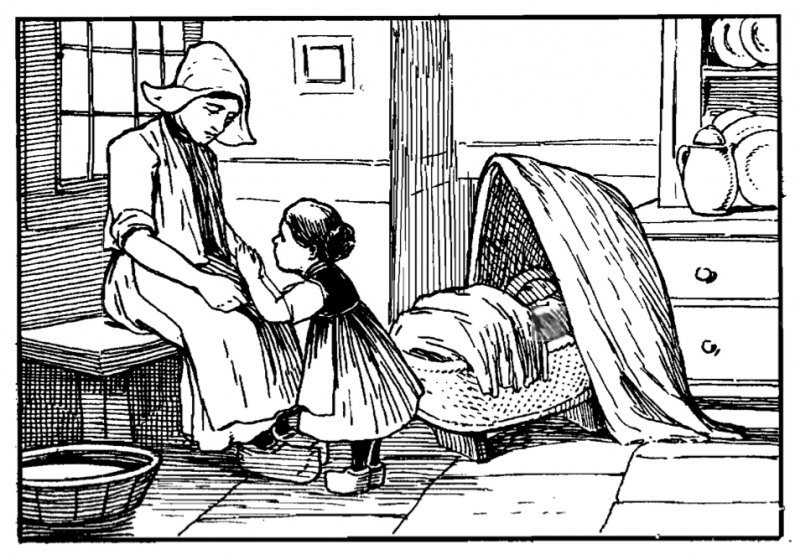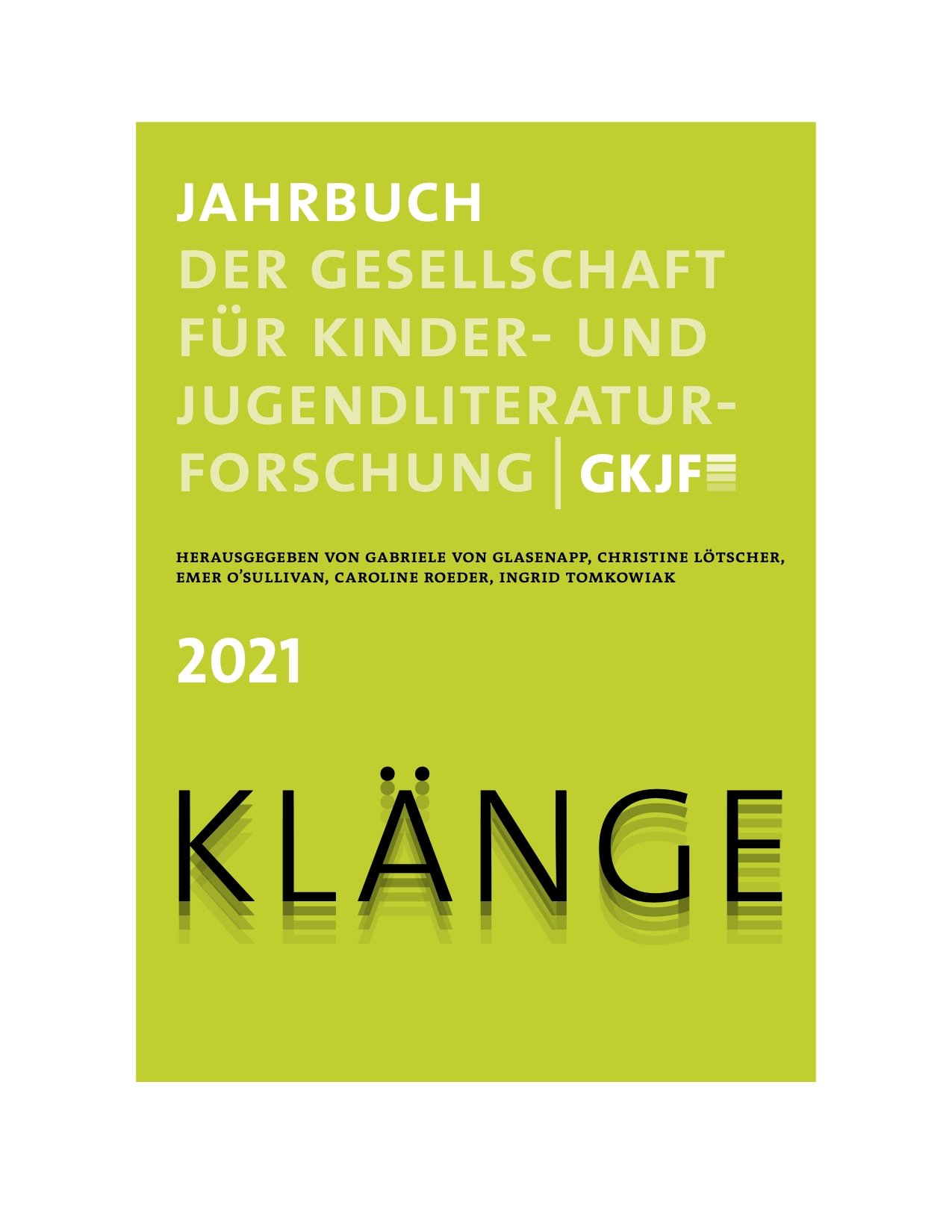You can now read another article of mine, a labor of love that’s been in the works for about a year now. It’s through Textes & Contextes, a journal connected to the Interlanguage Center at the University of Burgundy. The theme is “Lullabies: Historic and Cultural Circulations, Transmissions of the Intimate,” and considers the lullaby writ large as a transcultural and mobile expression of intimacy. My contribution to the discussion it entitled “Instrumental Lullabies and 19th Century Representations of Childhood, Girlhood, and Motherhood,” and examines lullabies that have been recontextualized several times over, not functional in their original care-taking sense, and not performed in adult performance contexts as art songs or virtuosic berceuses. These are instrumental lullabies that children practice and perform in their own homes, imaginatively playing out roles of childhood, girlhood, and (future) motherhood. I look at the dynamics of performance as self-regulation, the roles of mothers as domestic teachers, and adult mimicry in musicalized doll play. My final section looks at examples that have more problematic depictions of lullabies, both by female composers from the USA, Florence Newell Barbour and Juliet Adams, aka Mrs. Crosby Adams. The latter is particularly interesting for her pedagogical perspective which she articulated in a wealth of publications, journals, and letters. I’d like to make a larger project of her in the future.
Publication Announcement: Sacred and Secular Intersections
My latest publication is out! After a bit over a year the edited volume Sacred and Secular Intersections in Music of the Long Nineteenth Century: Church, Stage, and Concert Hall has been published through Lexington Books. The project came about through the Society for Christian Scholarship in Music in a project that sought to consider the “sacred” as a musical topic that crossed historical and cultural boundaries in rich ways. My chapter was entitled “The Sacred Looking Glass: Imaginative Children’s Music as Syncretic Nexus.” First considering the baseline of Isaac Watts’ pedagogical perspective on children’s music as a way to instill doctrine in their hearts and minds, I shift to sacred topics in instrumental children’s music used in domestic settings, which effectively overlapped and complicated the sacred and secular. I analyze a wide variety of pieces by composers throughout the western word (three of whom happen to have the first name Alexander), considering the stylized quotation of sacred songs, depictions of children in the act of prayer, images of church services and ringing bells, and moralized musicalizations of angels and demons. Due to costs, I could not include any sheet music examples in the text, but the majority are quite findable online. The editors, Effie Papanikolaou (Bowling Green State University) and Markus Rathey (Yale University) were great to work with and provided a wonderful place for a wide variety of scholars to add to this conversation; in the words of one reviewer, it’s “a rich feast indeed.”
Publication Announcement: GKJF "Klänge"
This autumn you’ll be able to read my latest peer-reviewed publication in Jahrbuch der Gesellschaft für Kinder- und Jugendliteraturforschung [Yearbook of the Society for Children’s and Youth Literature Research]. The journal’s theme is “Klänge” which translates to “Sounds” (and also happens to be the title of an important 1913 poetry + woodcuts book by Wassily Kandinsky), and provided the perfect context for presenting my research on the socializing pressures of imaginative children’s music. My article is entitled “The Guiding Hand: Hidden Adult Authority in Children’s Piano Music” (pp. 51–65) and provides cultural context and analysis of pieces by Robert Schumann, Cornelius Gurlitt, and Théodore Lack. I here extend ongoing research that I first presented at the IRSCL Congress in Stockholm, particularly in consideration of the pianistic dramatizing of the French bogeyman figure Croquemitaine. Because it is accessible online, we were able to include links to performances so you actually hear the “sounds” of the music.
At the Piano: Academic and Performer
Here's a little story to illustrate the richness that comes of melding scholarship with performance:
To crush my comprehensive examinations in the upcoming academic year I am spending some time this summer nose-to-book, building mental monoliths of specialized knowledge. (In case you don't know, comprehensive examinations, or "comps,"* are the last hurdle a budding musicologist must climb before they can start writing their dissertation. Imagine becoming an expert on five enormous topics, feverishly scribbling essay-length answers in an examination room for days on end, identifying scores and audio examples, withstanding oral questions from a panel of experts... Kinda fun!?) While focusing my research on one topic a month, June has been spent exploring something that particularly interests me, piano character pieces of the Romantic era. A collection of essays entitled Nineteenth-Century Piano Music edited by R. Larry Todd gives a great overview of key issues and concepts from a variety of intellectual viewpoints. This topic touches a variety of intellectual buttons for me (history, historiography, genre, technology, performativity), but it also speaks to me in practical terms because of my history and training as a pianist.
James Ensor's Russian Music (1881) Looks like either a very comfy carpet or a very uncomfy one. Image source
For the past two years I have played piano at a retirement community here in Santa Barbara called Samarkand, specifically in the skilled nursing facility section of the complex. Performing on the piano is nothing new to me and I am grateful for the opportunity to keep up my chops, but there are undeniably unique challenges in playing for a room of retirees, the majority of whom labor under some form of dementia. I've played in the midst of roving wheelchairs, inchoate audience outbursts, impromptu audience participation (good thing I can sight-read), and all manner of alarms sounding from doors, medical machinery, or loudspeakers. The number of listeners fluctuates within a half hour span as some are taken off for check-ups or to physical therapy sessions, while it is often quite difficult to ascertain who is awake or asleep or somewhere in between. Once I even gave a concert to an empty room, due to the fact that none of the residents could be in such close proximity to each other because of a flu quarantine, although I was told they would still love to hear the music wafting into their individual rooms. It is impossible in this setting to insist upon the pious, silent, respectful, and meditative reverence that we usually associate with classical music concerts. (Thanks a lot, A.B. Marx!) Rather than see this as a failure, I look at these performances as wonderful opportunities to make classical music a life-affirming rather than life-conforming activity.
I have found that the most simple and sincere way of doing this is to attempt to share your true self with your audience: talk to them, look at them, share what you enjoy about the next piece, show them how the sheet music you have is from your grandmother's library and was $2.00 back in the 1950s, invite them to participate by imagining a picture in their minds, ask them who has ever been to Poland before, play a hymn and welcome any sing-alongs. The other day I found myself diluting some of the thick, academic research I had just read in an essay by Jeffery Kallberg on the music of Frederic Chopin. Contemporaries of Chopin were struck by the "otherness" and "strangeness" of Chopin's music, especially the mazurkas, but were able to stomach it in large part by appealing to his "Polishness." The stop-and-go melodies, dynamic disjunctions, and haunting, hymn-like middle section of Mazurka in A-flat Major op. 7, no. 4 for instance find a sort of justification in this nineteenth-century interpretation of cultural difference. Right after Chopin I took out Kinderszenen op. 15 by Robert Schumann and suddenly recalled Anthony Newcomb's essay on the stylistic ambiguities and compositional contradictions of that composer. Contemporaries also heard Schumann's pre-1840s piano strange, but couldn't explain the effect through a paradigm of cultural difference seeing as the composer was German like them. Schumann's strange disjunctions and rhythmic complexities stemmed, rather, from the writings of Jean Paul and E.T.A. Hoffmann, German authors that by the 1830s and 1840s were largely considered old-fashioned, mannered, and bizarre. As a result, Schumann's early works remained little-known to the public, an economic fact that probably helped prompt a change in the composer's style once he became a financially responsible husband and father. (At the same time, today the pieces heard in concerts today are the early, bizarre ones, praised for their forward-thinking complexities. The pendulum keeps rocking.)
In my attempt to speak honestly and clearly to my audience I found myself making an interesting connection between two academic arguments while presenting it in an understandable and succinct manner to nonspecialists. I felt as though it breathed new life into my research by revealing its usefulness and accessibility through public speaking and performing. It also enriched my performance by giving me the opportunity to genuinely share of my intellectual and emotional gifts with a group of people in great need of human connection and empathy.
I find performing to residents of a skilled nursing facility very rewarding, but, again, not in the traditional sense. It is with a heart-wrenching combination of frailty and strength that an individual bent with Parkinsons straightens up at the end of a piece to clap twice before settling back into their wheelchair, or that someone slowly and repeatedly shares the highlights of their career as a touring concert pianist in the 1930s, or that a woman dressed in a snowy-white nightgown drifts ethereally into the room and kisses me on the cheek after a final cadence only to shuffle out of sight.
- To the academic: Who is your research for? How do you communicate it? Do you seek to build bridges or build barriers?
- To the performer: Who is your audience? What do you expect from them? What of yourself do you share? Again, bridges or barriers?
- To both: Why do you not work in harmony together more often?
Kate Gasser's Young Girl at Piano. And approachable performance. Image source
* In her book Get It Done, Sam Bennett suggests overcoming the impersonal abstraction of large projects by renaming them. Therefore, in my own head, rather than call them "comps" I have dubbed them "Crossing Helcaraxë," a reference only a serious J.R.R. Tolkien fan would understand. :)
Books used:
Bennett Sam. Get It Done: From Procrasticnation to Creative Genius in 15 Minutes a Day. Novato: New World Library, 2014.
Todd, R. Larry., ed. Nineteenth-Century Piano Music. New York: Routledge, 2004.





